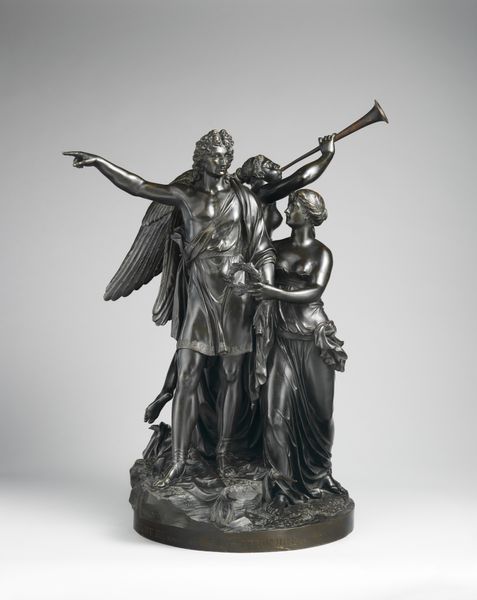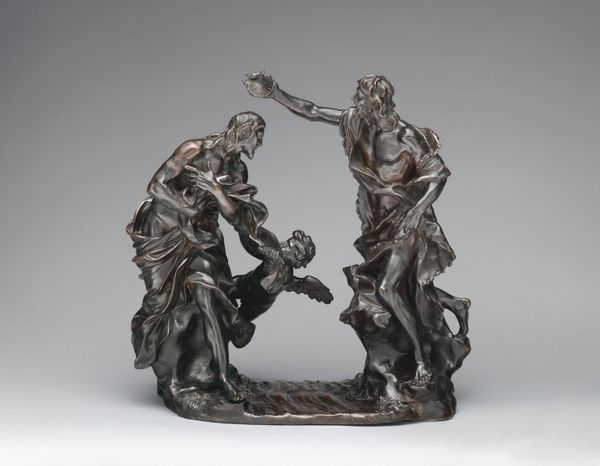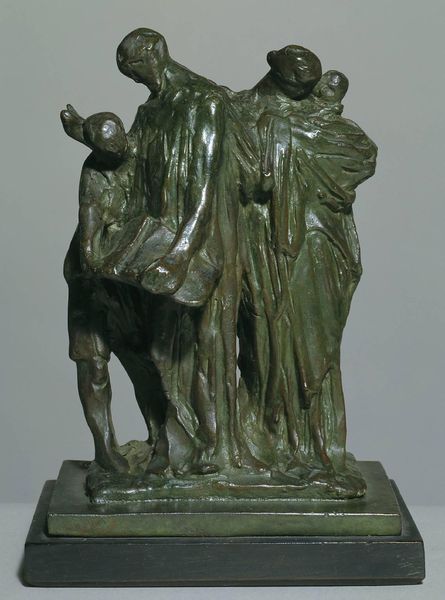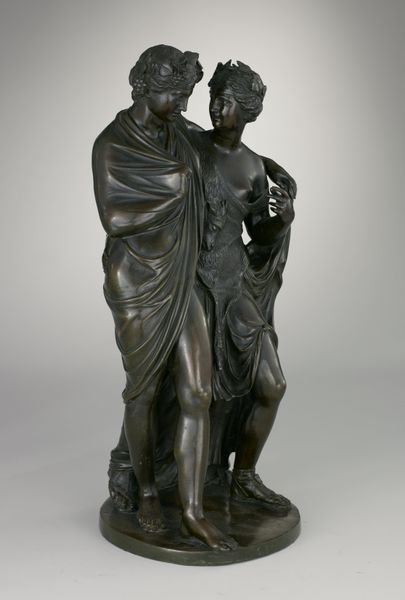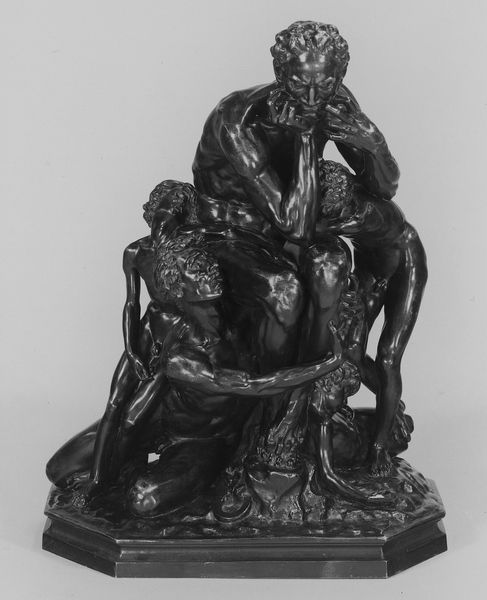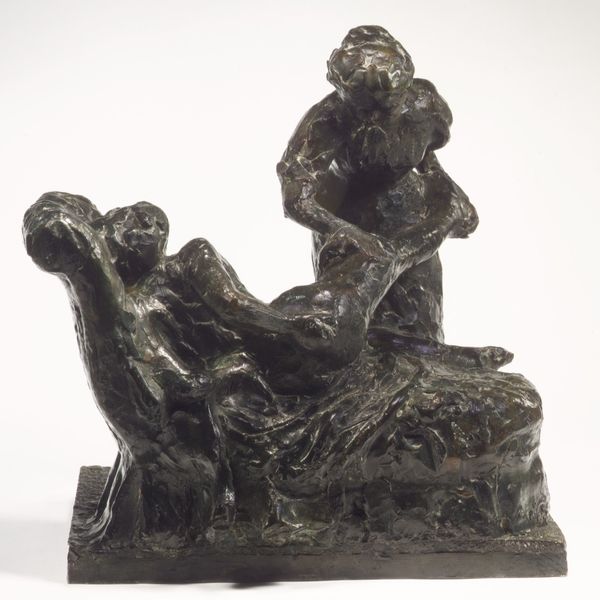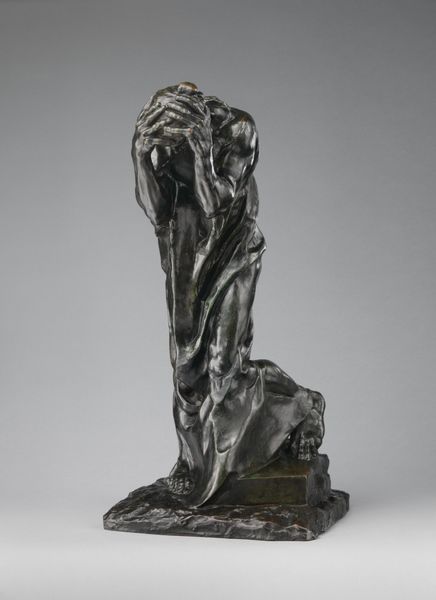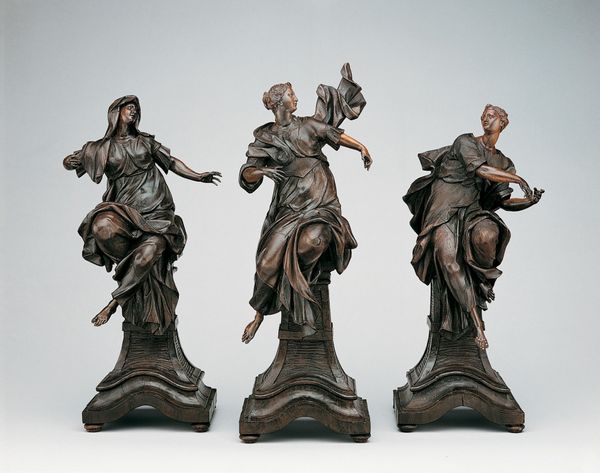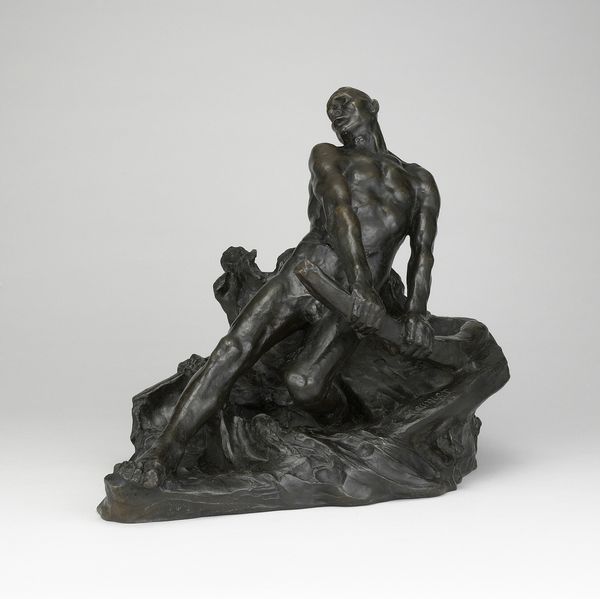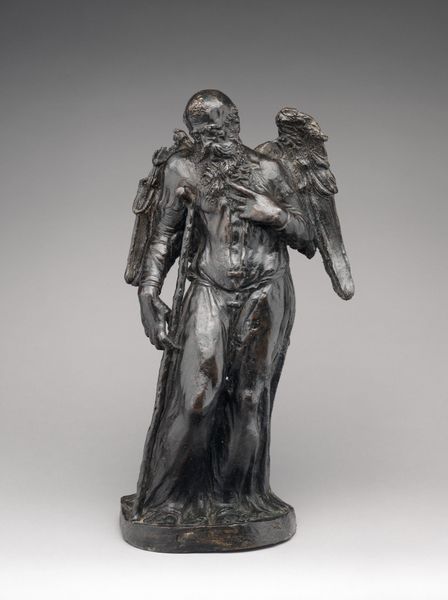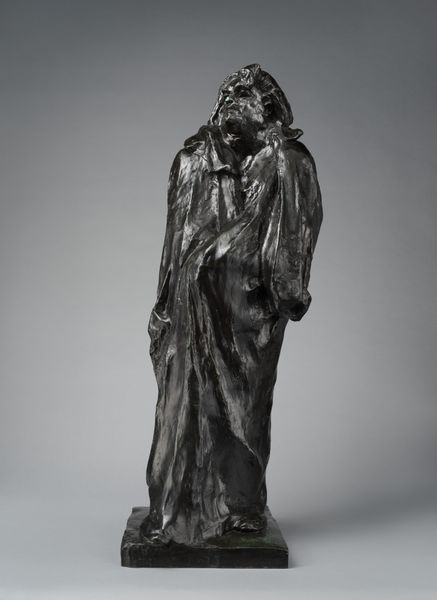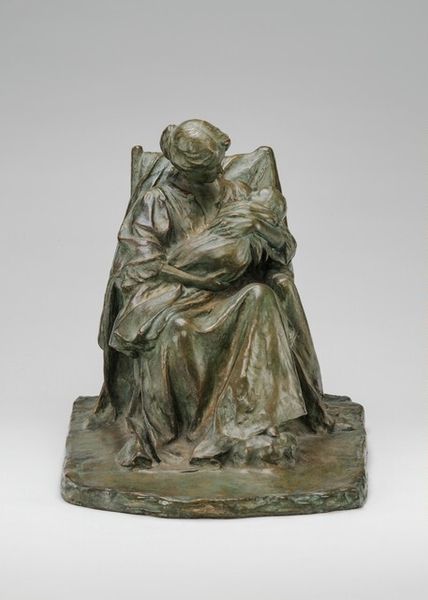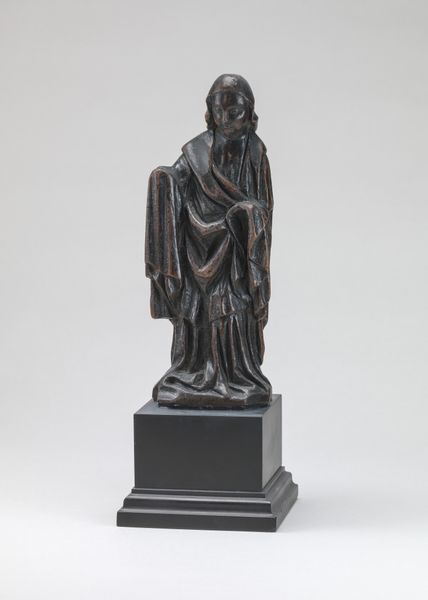
bronze, sculpture
#
sculpture
#
bronze
#
figuration
#
sculpture
#
history-painting
#
academic-art
#
decorative-art
#
modernism
Dimensions: Overall: 82 1/2 × 94 × 95 in. (209.6 × 238.8 × 241.3 cm)
Copyright: Public Domain
Curator: Here we have Auguste Rodin’s “The Burghers of Calais,” a bronze sculpture created between 1884 and 1895, currently residing at The Met. The immediate impact is undeniably heavy, wouldn't you agree? Editor: Absolutely. A certain solemnity permeates it. I’m drawn to the almost theatrical rendering of despair and resignation in their postures. But tell me, what exactly makes this piece significant from a formal perspective? Curator: Consider the radical departure from idealized representations typical of historical sculptures. Rodin intentionally disrupts conventional notions of heroism through surface and composition. The rough texture of the bronze captures a sense of profound psychological distress; and observe how the arrangement eschews a clear focal point, compelling viewers to confront the shared emotional burden. Editor: The weight of history is certainly palpable. The symbolism, so heavy. These figures—Eustache de Saint Pierre, Jacques de Wissant, and the others—they offered themselves to King Edward III to save their city. The keys to Calais clutched in one man's hands…it's an age-old tale of sacrifice echoed across cultures. I'm also reminded of the ritualistic garb assumed when offering oneself as sacrifice. Curator: Indeed. Yet, it transcends mere narrative. It pushes beyond history-painting expectations. Note how the individualized suffering and stark realism override celebratory glorification; that lack of heroic unity forces a critical reflection on conflict. Rodin masterfully manipulates the medium, allowing the materiality of bronze to amplify the sculptures' psychological density. Editor: And what about its continued cultural resonance? This moment frozen in bronze reflects a deeply human experience: the agonizing decisions made during times of crises and serves as a timeless representation of communal agony, bravery, and atonement. Its raw depiction offers something cathartic. Curator: Precisely. Through strategic formal choices, Rodin reframes the historical event. The sculptural qualities and intentional manipulation offer insights beyond the narrative itself. Editor: Rodin's masterful composition offers an enduring representation of complex human response. Curator: A beautiful confluence of form and historical symbolism.
Comments
No comments
Be the first to comment and join the conversation on the ultimate creative platform.
